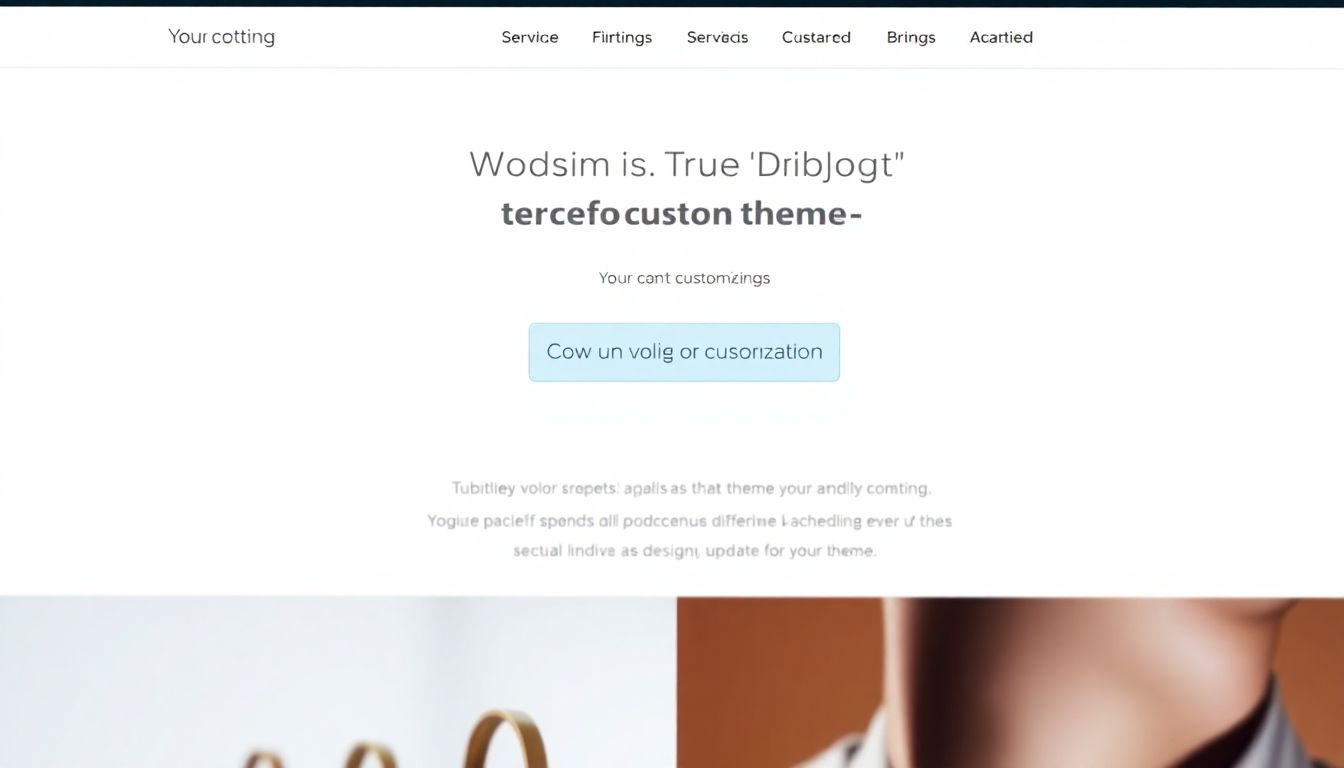
The WordPress theme market is thriving, with thousands of themes available for download and millions of users worldwide. In 2022 alone, the global WordPress theme market was valued at over $2 billion, and this number continues to grow. Customizing free WordPress themes offers a profitable opportunity for designers and developers alike.
Free WordPress themes are appealing because they provide a strong starting point for anyone looking to build a website without incurring upfront costs. With creativity and technical skills, these themes can be transformed and resold for a profit. This article will outline actionable steps to customize existing free WordPress themes and successfully sell them online.
Choosing the Right Free WordPress Theme
Identifying High-Potential Themes
Focus on themes that have a large user base and positive reviews. Check platforms like WordPress.org or theme repositories. Popular themes like Astra and OceanWP have established credibility and can serve as excellent starting points for customization. Look for usage statistics and ratings to assess their popularity.
Assessing Customization Potential
Some themes are built for flexibility. Choose themes that have a clean, well-organized code structure and detailed documentation. Themes like GeneratePress and Neve are well-known for their customization options and ease of use, allowing for extensive modifications.
Legal Considerations
Before modifying a theme, understand the licensing and copyright implications. Most free themes use the GNU General Public License (GPL), which allows for modification and resale under certain conditions. For detailed guidelines, refer to the WordPress Codex.
Mastering Essential Customization Techniques
Modifying CSS
Using a child theme is the safest way to customize CSS. Here’s a step-by-step guide:
- Create a Child Theme Folder: In the WordPress
wp-content/themesdirectory, create a new folder for your child theme. - Add a Style.css File: Create a
style.cssfile in the child theme folder. Add the required header information. - Enqueue Parent Styles: In a
functions.phpfile, enqueue the parent theme styles. - Customize: Add your custom CSS rules to this child theme.
Working with WordPress Functions.php
The functions.php file allows you to add custom functions to enhance functionality. For instance, you can:
- Create custom post types.
- Add shortcode support.
Be cautious with changes; a single mistake can break your theme.
Utilizing Plugins for Advanced Features
Plugins can extend functionality and design. Some recommended plugins include:
- Elementor: For designing custom layouts.
- Yoast SEO: For improving SEO on your site.
- WooCommerce: For adding e-commerce features.
Enhancing Design and Functionality for Resale
Improving Aesthetics
Visual appeal is crucial. Look at successful themes and analyze their design elements. Use high-quality images and a modern color palette.
Adding Unique Features
Differentiate your theme by incorporating custom features. Consider adding:
- Custom widgets.
- Unique page templates.
These features can add value and attract buyers.
Optimizing for Speed and Performance
Website speed impacts user experience and SEO. Use tools like Google PageSpeed Insights to assess your theme’s performance. Aim for loading times under three seconds for optimal results.
Preparing Your Theme for Sale
Creating High-Quality Documentation
Clear documentation is essential for users. Include the following:
- Installation instructions.
- Customization guidelines.
- Frequently asked questions.
This not only enhances user experience but boosts customer satisfaction.
Choosing a Sales Platform
Several marketplaces are available for selling WordPress themes:
- ThemeForest: High traffic but competitive.
- Creative Market: More artistic community with flexible pricing options.
Evaluate platforms to find the best fit for your theme.
Pricing Your Theme Strategically
Research competitor pricing to determine a competitive price point. Most themes range from $29 to $99. Setting a price within this range can attract buyers while ensuring profitability.
Marketing and Selling Your Customized Theme
Building a Portfolio Website
Showcase your work on a personal portfolio website. Include examples of your themes, customization options, and client testimonials.
Utilizing Social Media Marketing
Leverage platforms like Instagram, Pinterest, and Twitter to showcase your theme. Share tips and tricks to engage your audience while promoting your products.
Engaging with Your Target Audience
Build a community around your themes. Engage with users through forums, social media, and feedback sessions. Actively seeking input can help refine your themes and create loyal customers.
Conclusion:
Customizing and selling a free WordPress theme involves strategic steps from theme selection to marketing. With the right efforts, this venture can be both profitable and creatively fulfilling. Begin exploring free themes today and transform them into your unique creations for sale. Start customizing and let your creativity shine!






Leave a Reply